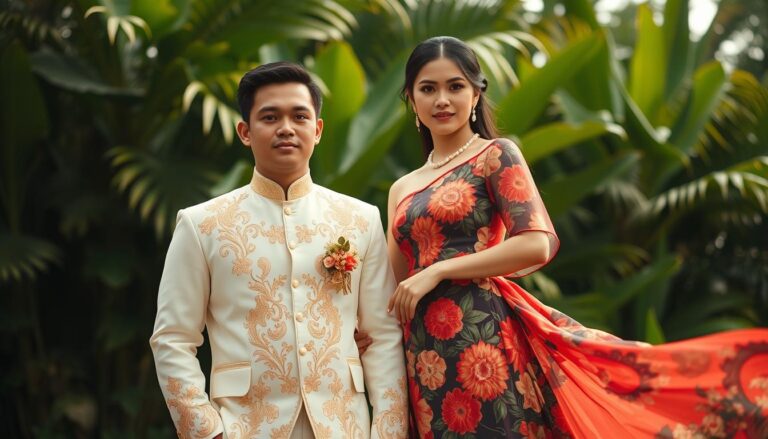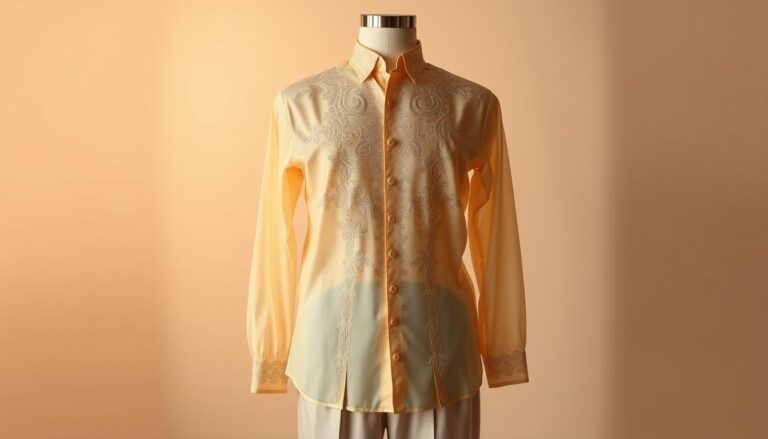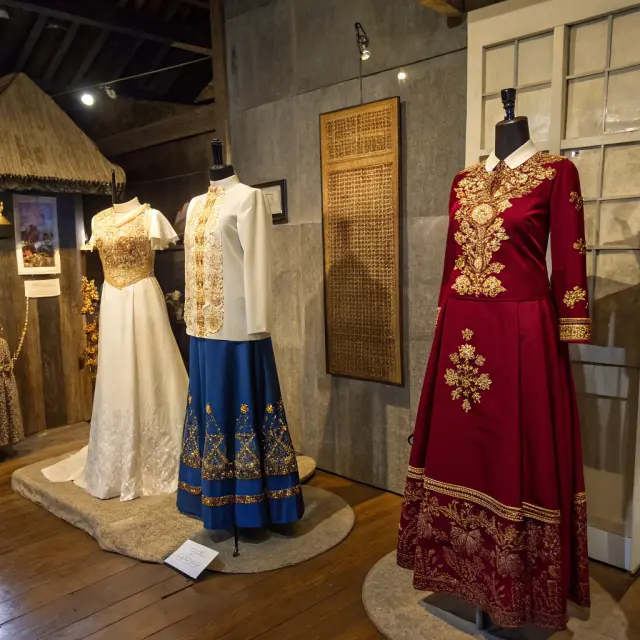Budget-Friendly Modern Filipiniana Shopping Guide
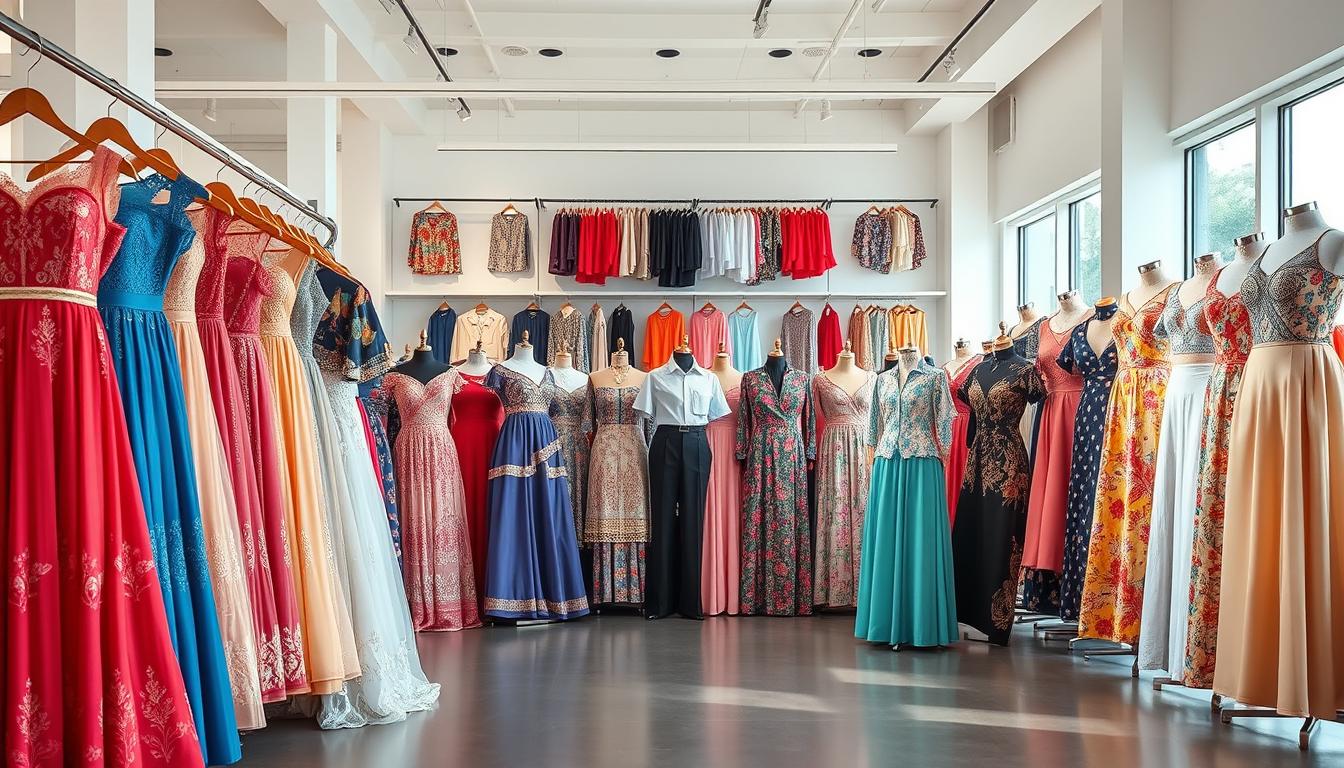
Finding elegant attire that honors Filipino culture while aligning with today’s trends can feel overwhelming for brides-to-be and style enthusiasts. This guide simplifies your journey, offering practical solutions to embrace tradition without sacrificing personal flair.
Filipiniana outfits hold deep cultural meaning, often crafted from delicate fabrics like piña and jusi. Over time, designers have reimagined these pieces with sleek silhouettes and subtle embellishments, making them ideal for weddings, photoshoots, or cultural celebrations.
We’ve curated insights from trusted brands like BarongWorld and Burdang Pinoy, known for blending craftsmanship with affordability. Discover how to select pieces that reflect your personality while staying true to Filipino roots. Learn styling tricks, care tips, and where to find customizable options that fit your vision perfectly.
Key Takeaways
- Discover how traditional fabrics and designs merge with contemporary trends
- Explore trusted brands offering personalized outfits at accessible prices
- Learn to maintain delicate fabrics for long-lasting wear
- Find styling ideas that balance cultural authenticity with modern appeal
- Understand sizing and shipping considerations for stress-free purchases
Understanding Filipiniana and Its Cultural Significance
Rooted in centuries of tradition, the Filipiniana embodies the Philippines’ cultural journey. Emerging during Spanish colonization, this traditional dress blends indigenous craftsmanship with foreign influences. Its delicate fabrics like piña (pineapple fiber) and jusi (banana silk) reflect the archipelago’s natural resources.

Defining Filipiniana and Maria Clara
The term Maria Clara originates from Jose Rizal’s 1887 novel, symbolizing grace and resilience. This iconic dress worn by Filipino women features butterfly sleeves and intricate embroidery. It became a visual shorthand for national identity during the fight for independence.
Tradition, History, and Modern Adaptations
Originally reserved for formal occasions, today’s traditional dress appears in creative reinterpretations. Designers fuse streamlined silhouettes with ancestral weaving techniques. A dress worn for graduations in the 1900s might now grace museum exhibitions or fusion weddings.
This evolution transforms cultural artifacts into living traditions. Younger generations pair Filipiniana tops with jeans, proving heritage adapts without fading. Each stitch carries stories of resistance, artistry, and community pride.
Budget-Friendly Modern Filipiniana Shopping Guide: Essential Tips for Smart Shoppers
Securing authentic pieces that honor tradition without draining your wallet requires strategic planning. Follow these practical steps to navigate stores effectively and make informed decisions.
What to Look for in a Budget-Friendly Set
Start by examining fabric blends. Many affordable options use piña-seda (pineapple-silk mix) instead of pure handwoven textiles. Check stitching density – 12-15 stitches per inch indicates durable construction.

Prioritize versatile designs like detachable sleeves or adjustable waistlines. These features let you customize outfits for multiple events. Popular online stores like Filipiniana MNL offer sets under $150 with free size adjustments.
Comparing Styles and Prices
Create a comparison chart before purchasing. Here’s a snapshot of current market options:
| Store | Price Range | Lead Time | Key Feature |
|---|---|---|---|
| Kultura.ph | $90-$120 | 7-10 days | Machine-embroidered details |
| LocalBazaars | $75-$160 | 5-8 days | Mix-and-match separates |
| ManilaCouture | $130-$200 | 14 days | Custom color options |
Always factor in shipping timelines. Rush orders often add 30% to costs. For best value, place orders 3-4 weeks before your event. Review return policies – stores offering free alterations within 10 days of delivery save you from unexpected expenses.
Exploring Filipiniana Top Styles and Variations
Filipiniana tops blend heritage with modern flair through creative design choices. From time-honored silhouettes to reimagined shapes, these pieces adapt ancestral techniques for today’s wearers.
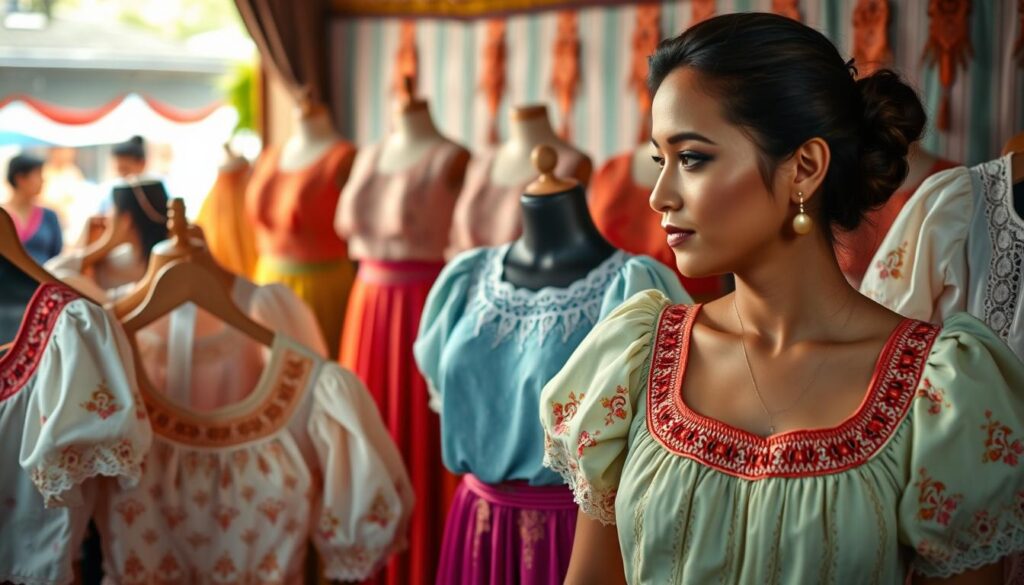
Classic Barong-Inspired and Maria Clara Designs
The barong tagalog’s influence shines in structured collars and sheer fabrics. Brands like Baro’t Saya reinterpret this iconic shirt with floral calado embroidery, pairing it with slim-fit skirts. Maria Clara-inspired tops feature butterfly sleeves and delicate punto lace, echoing 19th-century elegance.
Alampay designs showcase wrap-style necklines, often layered over camisas. These versatile pieces work for casual lunches or formal events. Traditional jusi fabric adds breathability, while modern blends reduce wrinkling.
Contemporary Bolero and Puffed Sleeve Options
Today’s bolero jackets reinvent the classic silhouette with cropped lengths and angular cuts. Designers pair them with high-waisted trousers for office-ready looks. Bold shoulder accents, like exaggerated puffs, add drama without overwhelming petite frames.
Innovative brands fuse barong tagalog elements with asymmetrical hemlines. A sheer piña overlay might contrast with a solid inner layer, creating depth. Mix-and-match separates let wearers combine embroidered boleros with minimalist tanks, bridging eras effortlessly.
Choosing the Perfect Colors and Patterns for Your Look
The colors and patterns you select transform your ensemble from simple to striking. These choices honor cultural roots while expressing individuality. Start by considering your event’s formality and personal complexion undertones.
Floral Prints, Burda Techniques, and Patches
Traditional burda embroidery elevates basic silhouettes through intricate cutwork. Artisans create starburst or leaf-shaped patterns by hand-stitching lace into fabric gaps. This technique adds depth to collars and cuffs without overwhelming the design.
Floral motifs remain timeless, with hibiscus and sampaguita prints dominating modern collections. Designers often cluster blossoms along hemlines for balanced visual interest. Patchwork accents in contrasting shades inject playful energy, especially when arranged asymmetrically.
Modern Mixes with Traditional Patterns
Contemporary pieces blend heritage symbols with minimalist lines. A geometric-patterned sash might pair with classic butterfly sleeves, creating harmony between eras. Earthy tones like mangga yellow or indigo work well for daytime events, while metallic threads add evening glamour.
Experiment with color blocking using ancestral weaving patterns. Try pairing a navy inabel-inspired top with cream trousers. This approach respects tradition while showcasing personal style. Remember: cohesive patterns and complementary hues create polished looks that stand the test of time.
Finding the Right Fit for Different Body Types
Every Filipina deserves to feel confident in attire that celebrates her unique shape. Designers now craft modern interpretations of traditional wear with thoughtful cuts for diverse proportions. The key lies in balancing cultural elements with strategic tailoring.
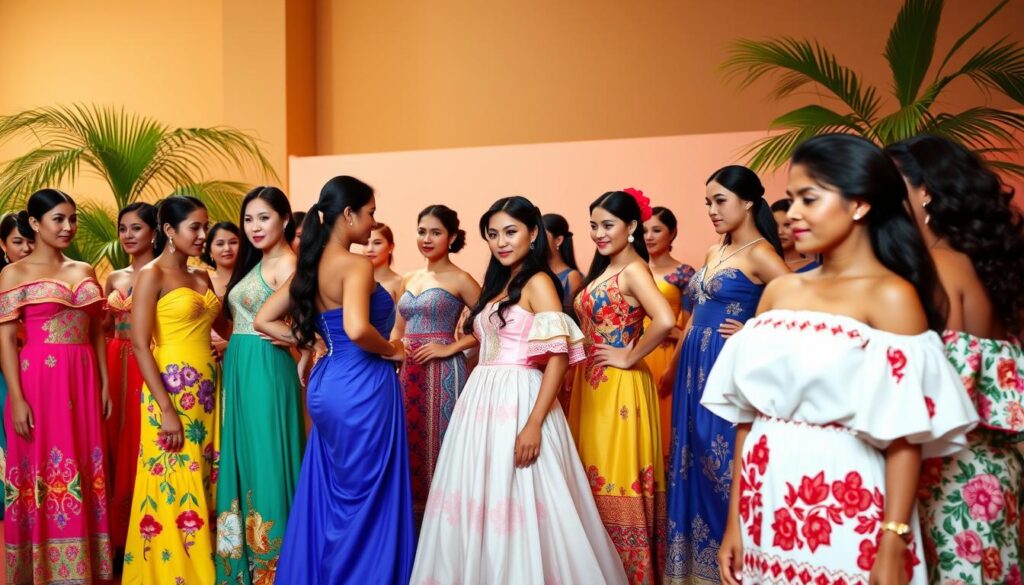
Tips for Petite Women
Petite frames shine in streamlined silhouettes. Opt for fitted bolero tops paired with high-waisted skirts to elongate your body. A Manila-based designer notes: “Vertical seams and unbroken color blocks create the illusion of height without sacrificing tradition.”
Choose butterfly sleeves that end above the wrist to avoid overwhelming smaller shoulders. Narrow belts or ribbon sashes emphasize waist definition. Avoid floor-length skirts – midi lengths with side slits maintain proportion.
Advice for Curvy and Tall Figures
Curvy women benefit from V-necklines that draw eyes upward while cinching at the natural waist. Wrap-style tops with adjustable ties offer customizable shaping. Darker hues in jusi silk provide a sleek, fluid drape.
Taller frames can balance proportions with peplum details or tiered skirts. Designers recommend A-line cuts that flare below the hips to add volume. One wearer shares: “My 5’10” frame finally found harmony in a cropped barong with wide-leg trousers.”
Always request custom measurements when ordering online. Most brands allow free adjustments for sleeve lengths and torso measurements. Remember – the right fit honors both heritage and your body’s natural elegance.
Where to Buy Affordable Filipiniana Attire
Discovering quality cultural attire becomes effortless when you know where to look. Trusted retailers combine digital convenience with artisanal craftsmanship, offering pieces that honor tradition at accessible prices.
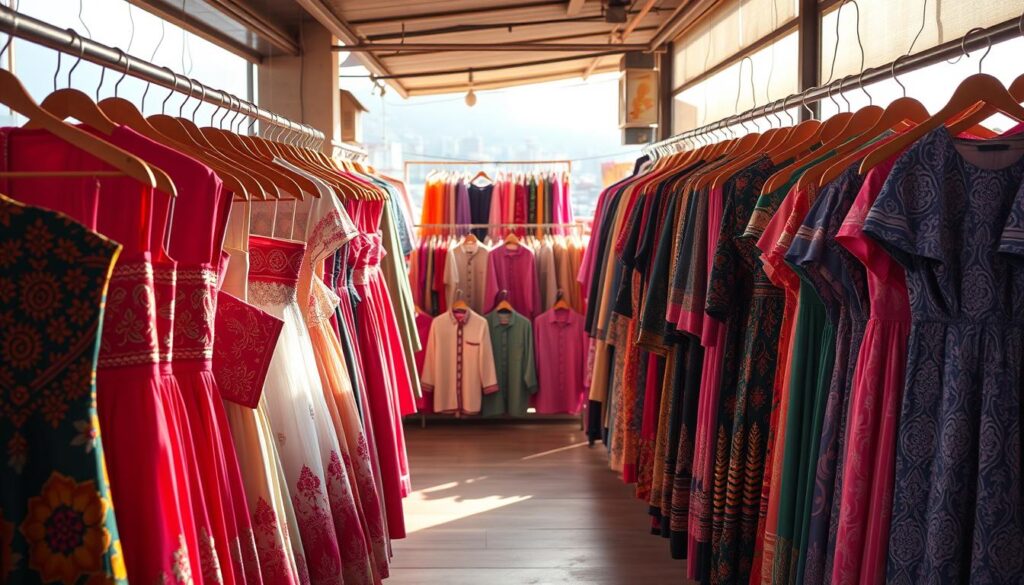
Top Retailers for Authentic Pieces
Filipiniana MNL stands out with its user-friendly website featuring real-time chat support. Their ready-to-wear sets start at $25, with custom sizing available for no extra fee. Orders ship within 5 business days across the Philippines, while international buyers receive tracking updates.
BarongWorld excels in fabric innovation, blending piña with durable polyester mixes. Their website includes 360-degree product views and detailed care guides. A customer shares: “The virtual tailoring tool helped me get the perfect sleeve length without visiting a physical store.”
Local shops like Manila Heritage Crafts offer in-person fittings. Many provide free hemming adjustments if you visit their ateliers. For online purchases, always check:
- Secure payment gateways (GCash, PayPal, credit cards)
- Clear return policies
- Customer review sections
These retailers maintain affordability through efficient production models. Bulk fabric sourcing and digital pattern-making reduce costs without compromising embroidery quality. Most websites feature seasonal sales – sign up for newsletters to get early access.
Whether you shop online or visit local stores, prioritize platforms with responsive service teams. Many now offer video consultations to help visualize alterations. With these options, acquiring culturally rich outfits becomes both simple and rewarding.
How to Buy Affordable Filipiniana Attire: A Step-by-Step Guide
Acquiring authentic cultural attire online requires careful planning. Follow these simple steps to secure pieces that honor tradition while fitting perfectly.
Navigating Online Shopping Channels
Start by exploring trusted platforms like Filipiniana MNL. Their Instagram feed showcases current collections. Use their size chart (Small-5XL) as a reference before ordering.
Create an account for faster checkout. Save items to your wishlist to compare styles. Enable notifications for flash sales – many stores offer 15% discounts during cultural holidays.
Ensuring Quality and Custom Fit
You need to know three key measurements: bust, waist, and hips. Use a soft tape measure while wearing undergarments similar to what you’ll pair with the outfit. BarongWorld’s virtual tailoring tool helps visualize adjustments.
| Step | Tools Needed | Time Required |
|---|---|---|
| Select Fabric | Swatch images | 10-15 minutes |
| Input Measurements | Soft tape measure | 5 minutes |
| Review Order | Payment method ready | 7 minutes |
Processing time typically spans 5-7 business days. Rush orders cost extra but cut wait time by 48 hours. Always double-check shipping addresses – 23% of delays stem from incorrect details.
Follow these simple guidelines for smooth transactions. Reputable stores provide tracking numbers within 24 hours. For international buyers, expect 10-15 business days for delivery after production.
Styling and Accessorizing Your Filipiniana Outfit
Your cultural ensemble becomes truly complete when paired with thoughtful accents. The right combinations honor tradition while letting your personality shine through every detail.
Harmonizing Heritage with Contemporary Flair
Start with hair arrangements that frame your face elegantly. A low chignon adorned with fresh sampaguita flowers nods to tradition, while loose waves offer relaxed sophistication. For modern twists, try half-up styles with gold hairpins shaped like banig patterns.
Statement earrings work wonders. Pearl drops complement ivory piña fabrics, while geometric brass designs update darker hues. Manila-based stylist Rica Torres advises: “Choose one focal point – either bold makeup or intricate jewelry – to avoid visual clutter.”
Balance is key when applying cosmetics. Soft brown smokey eyes let crimson lips pop against embroidered necklines. For daytime events, swap reds for terracotta tints that harmonize with natural fibers. Consider these pairings:
| Garment Style | Hair | Makeup |
|---|---|---|
| Classic Maria Clara | Braided updo | Rosy cheeks + nude lips |
| Modern Crop Top | Sleek ponytail | Bold eyeliner + gloss |
Finish with footwear that bridges eras. Embroidered tsinelas sandals keep looks grounded in culture, while metallic block heels add urban edge. Remember – every choice should feel authentically you while respecting the garment’s legacy.
Caring for and Maintaining Your Filipiniana Attire
Your cherished cultural pieces deserve meticulous attention to retain their elegance. Proper care preserves intricate embroidery and delicate fabrics, ensuring these garments become heirlooms rather than single-use items.
Fabric-Specific Cleaning Methods
Cotton blends handle gentle machine washing in cold water. Use mild detergent and air-dry flat to prevent shrinkage. For piña or jusi silk, professional dry cleaning is essential – these fabrics weaken when soaked.
Make sure to point out stains when dropping off delicate items. One dry-cleaner in Quezon City advises: “Food particles left untreated become permanent marks after chemical processing.”
| Fabric | Cleaning Method | Drying | Storage |
|---|---|---|---|
| Cotton | Cold wash, mild soap | Lay flat | Fold in muslin |
| Piña/Jusi | Dry clean only | Hang to air | Garment bag |
| Polyester blends | Hand wash | No wringing | Rolled in tissue |
Store cotton dresses in breathable cotton bags to prevent yellowing. Avoid wire hangers – they distort shoulder shapes. For folded items, place acid-free tissue between layers to protect embroidery.
Make sure to check storage areas quarterly for moisture or pests. A light steam refresh every 6 months keeps fabrics looking crisp. With these steps, your Filipiniana dress will maintain its vibrant colors and structural integrity for decades.
Modern Trends in Traditional Filipiniana Fashion
Philippine fashion artisans are rewriting cultural narratives through innovative interpretations of heritage wear. Designers now fuse ancestral techniques with bold experimentation, creating pieces that resonate with today’s style-conscious wearers.
Pioneering Styles Shaping Today’s Aesthetic
Frederick Policarpio’s 2023 collection demonstrates this evolution. His asymmetrical baro’t saya pairs hand-embroidered capes with minimalist slip dresses. “We’re bridging generations,” he explains. “Each piece honors weavers’ legacies while inviting fresh perspectives.”
Three key trends dominate current designs:
- Convertible necklines that shift from boat to sweetheart shapes
- Laser-cut calado patterns on stretchable fabrics
- Modular accessories like detachable train panels
Brands like MARCOpilipino showcase reversible jackets with traditional inabel prints on one side and solid colors on the reverse. This duality allows wearers to toggle between ceremonial and casual fashion effortlessly.
Contemporary collections also prioritize sustainability. BarongWorld’s eco-friendly line uses pineapple leaf fibers blended with organic cotton. Their butterfly sleeve tops now feature adjustable waist ties, accommodating diverse body types while reducing fabric waste.
These innovations prove cultural attire can evolve without losing its soul. As designers reimagine the Filipiniana look, they create wearable art that sparks conversations about identity and progress.
Insights from Filipino Designers and Local Brands
Visionary creators are reshaping cultural attire through innovative craftsmanship. These artisans blend ancestral techniques with fresh perspectives, offering pieces that honor heritage while appealing to global sensibilities.
Spotlight on Frederick Policarpio, MARCOpilipino, and More
Frederick Policarpio reimagines the barong tagalog through geometric laser cuts on piña-seda fabric. His 2024 collection features convertible necklines that shift from mandarin collars to off-shoulder designs. “Every stitch tells two stories,” he shares. “One of our weaving traditions, another of today’s creative freedom.”
MARCOpilipino stands out with reversible jackets combining inabel patterns and minimalist silhouettes. Their bestselling wrap top uses hidden magnetic closures for seamless transitions between formal and casual wear. This example demonstrates how traditional embroidery adapts to fast-paced lifestyles.
Three distinctive approaches define modern collections:
- Customizable sleeve lengths in BarongWorld’s separates
- Upcycled jusi fabric in Katre’s limited-edition dresses
- Modular train attachments for filipiniana dress designs
These creators prove cultural attire evolves through thoughtful innovation. Each piece serves as both homage and invitation – preserving techniques while inviting new interpretations.
Budgeting Strategies and Cost-Saving Tips for Filipiniana Fashion
Smart shoppers know style and savings go hand-in-hand for cultural attire. With 78% of buyers prioritizing versatile pieces according to Filipiniana MNL data, strategic planning helps you look polished without overspending.
Comparing Prices and Finding Value Deals
Start by reviewing fabric content across retailers. Cotton-polyester blends often work best for frequent use, costing 40% less than pure piña. BarongWorld’s mid-range options ($80-$120) balance intricate barong collars with machine-washable materials.
For weddings and special occasions, consider these cost-cutters:
- Rent elaborate pieces through local boutiques
- Choose separates that mix with existing wardrobe items
- Order during off-peak seasons (February-April)
Many shoppers overlook customization fees. A Quezon City buyer shared: “Adding lace trim during initial production saved me $35 versus post-purchase alterations.” Always request complete price breakdowns before ordering.
Timeless Filipiniana dresses in neutral shades offer maximum reuse potential. Opt for removable embroidery panels or convertible sleeves – these details let one outfit serve multiple occasions. Review care instructions carefully; dry-clean-only fabrics add long-term costs.
Balance tradition and budget by focusing on key heritage elements. A single hand-stitched barong motif makes greater impact than full-body embroidery. This approach keeps outfits authentic while aligning with practical spending limits.
Real Customer Experiences and Reviews
Satisfied clients consistently highlight how cultural attire elevates their personal style. From bridal events to cultural festivals, wearers praise designs that honor tradition while enhancing individual beauty.
Voices from Recent Buyers
Maria from Los Angeles shared: “The champagne-gold fashion piece I chose made my skin glow under evening lights. Filipiniana MNL’s team suggested this color after seeing my hair shade – pure magic!”
A wedding planner’s Instagram review noted: “BarongWorld’s collection offers 12 sleeve variations. We dressed 7 bridesmaids in different hues that complemented their skin tones perfectly.”
Key praises from verified buyers include:
- Custom color matching for various complexions
- Lightweight fabrics that move gracefully with hair accessories
- Detailed stitching enhancing fashion appeal
One BarongWorld client raved: “The embroidery details made my jet-black hair pop in photos. Their team even suggested floral pins matching my skin’s undertones!”
These testimonials reveal how thoughtful design choices create confidence. As collections evolve, customers appreciate options celebrating diverse beauty – from deep ebony hair textures to golden skin hues.
Conclusion
Embracing cultural heritage through attire becomes effortless when tradition meets contemporary flair. This guide has equipped you with insights to honor ancestral craftsmanship while expressing personal style. From selecting piña fabrics to mastering garment care, every step celebrates Filipino artistry reimagined for today’s wearers.
A well-chosen dress does more than enhance your look – it becomes a canvas for storytelling. Modern designs now cater to diverse skin tones and color preferences, ensuring everyone finds pieces that resonate. Whether you’re attending weddings or cultural events, these outfits blend timeless elegance with current fashion sensibilities.
If you’re looking to elevate your wardrobe, explore collections from BarongWorld and Filipiniana MNL. Their expertise in merging intricate details with wearable designs makes cultural expression accessible. Remember: quality materials and thoughtful tailoring ensure your dress remains a cherished piece for years.
Now’s the time to confidently curate outfits that reflect both heritage and individuality. With this knowledge, you’re ready to make informed choices – and make sure every ensemble tells your unique story.




